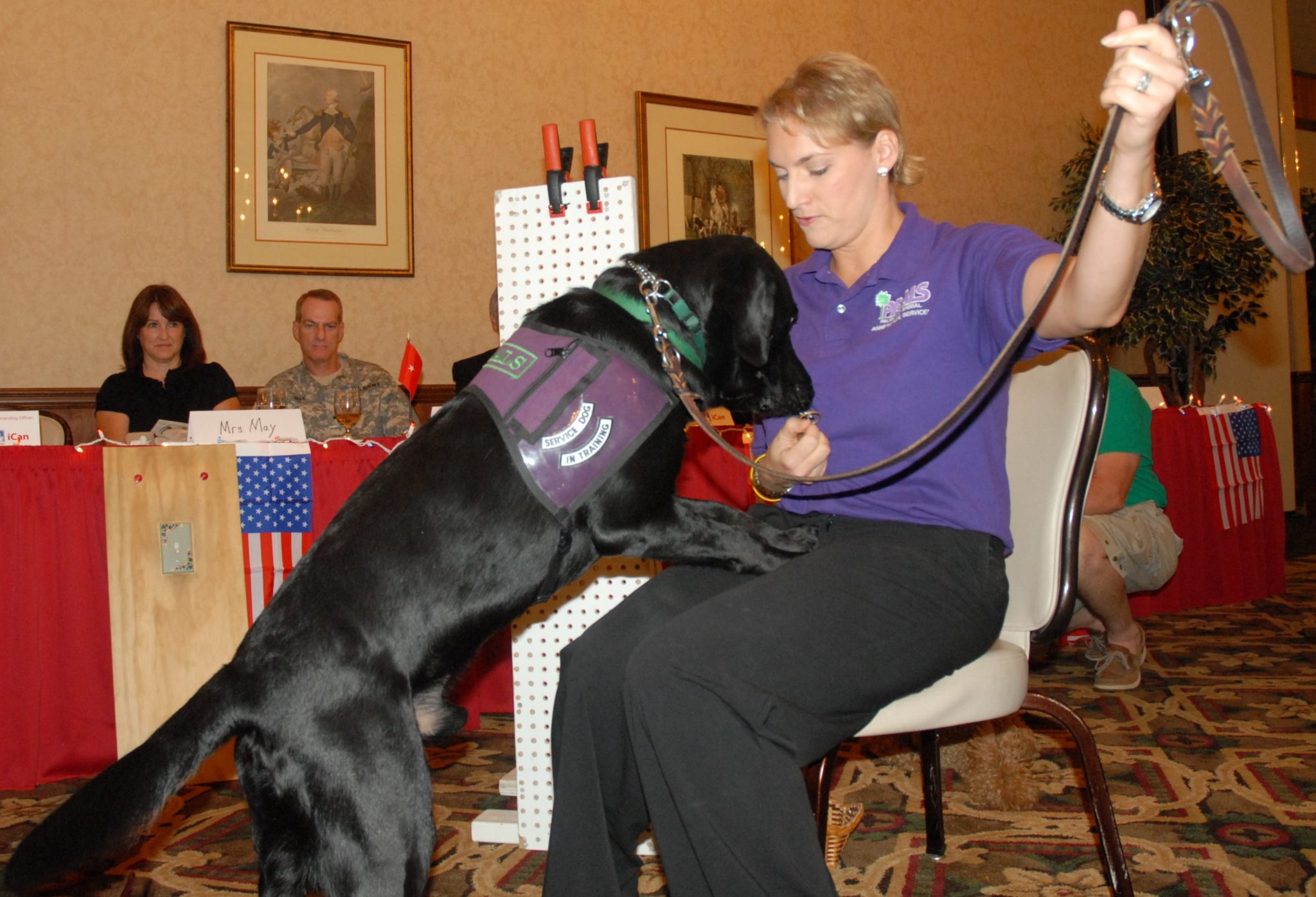What is the difference between an Emotional Support Animal, Service Dog and Therapy Dog?
Emotional support animals or emotional support dogs do not have any special training and it is not required by law. Their primary role is to provide emotional comfort, companionship, friendship and affection to their owner. The idea around having an emotional support animal is that the disabled person will be able to function better with the companion pet around, but it should be clarified that emotional support animals are more than house pets since they serve a higher purpose. Emotional support dogs and cats are allowed access to “no pets policy” housing and in the cabin of airplanes with an ESA letter from a licensed mental health professional.
Service dogs are highly trained, as they also have to fill their master’s limitations due to disabilities like physical impairment or blindness. Service animals are taught to push wheelchairs, or guide a blind person, or alert someone in case their master is having a seizure. Service dogs are entitled to accompany their handlers wherever their handlers go.
Therapy dogs are also highly trained, but compared to services animals, they are taught to be more socially adjusted to various people. Most therapy dogs are situated at hospitals, schools or communities that require calming, psychological and physiological healing. Therapy dogs do not have access like service dogs and emotional support dogs.
Emotional Support Animals: Crucial Facts You Should Know
Emotional Support Animals (ESA) are those that accompany a human with mental, emotional or psychological disability. In most cases, ESA companions are dogs or cats, but there have relatively been other animals that can very well serve the duties, such as a horse, turtle or rabbit.
A person with an emotional support dog or cat has been prescribed by his doctor to have one. His/her therapist, psychiatrist, psychologist or any licensed mental health professional has determined that he needs to have a comforting companion to help alleviate episodes that may arise from his condition.







It is completely ridiculous. ESA’S should be able to go everywhere with their handlers’ i have diabetes, mental health problems, anxiety and suicidal ideation. When my ESA is with me i have no thoughts of any of these problems. All my concentration is on my ESA, when he’s not with me my symptoms of all these diseases start taking control of my body. Please make ESA’S have the same rights as Service Animals.
Despite their differences, it is quite apparent that animals can be trained to do amazing things, especially dogs! With their help, people are able to do things that they would otherwise not be able to achieve. Service dogs help people with disabilities to achieve independence while therapy dogs and ESA s are able to provide love and support that only an animal could offer.
I have a question concerning what exactly my dog is able to do legally. My dog was recently prescribed to me by my doctor to help me levitate stress and anxiety do to college, being away from family, and having lost three family members that I was very close to in less than 8 months, and also keeps me focused. My doctor stated he will provide me with emotional support but most be allowed to accompany me at all times. So basically is what I’m asking is since I have trained him to apply pressure and paw at me and lick my face when I start to shut down, and demands for attention without me calling him, should he be able to accompany me to class . And what would his classification be it was unclear for me in the note. Thank you
Is it legal to make a dog that you already have as an ESA? Meaning can someone go to a therapist months later to get a written document stating that they should have an ESA due to a medical issue? Landlord is stating that the paperwork should’ve come before the dog was purchased.
Yes, you can make your current dog an ESA even after you have adopted or purchased the animal.
I feel ESA animals should have the same rights as to where they can go as do service dogs. I have an esa dog he is not certified, and as of right now it’s not worth certifying him because he is dying of a heart condition. So I’d like to be able to take him with me, but there are places that still won’t let him come because he’s not a quote-unquote service animal.. to me ESA animals serve as high purpose as service dogs because I feel with some people with emotional problems, mental problems need that animal with them to keep them calm and to cut down on any outbursts or breakdown a person could have. I have anxiety and depression and 99% of the time my dog can bring me out of a depression low. People without these problems just don’t understand what we go through. Hopefully one day the law will change Mama chuy Queen esa animals insane standing as service dogs because they provide a service weather highly trained or not
Has your dog been well socialized with people, children, and other pets? Has your dog been trained in basic obedience and does it consistently obey even when distracted? Has your dog been housebroken? Has your dog gone through public access training so that it won’t be a nuisance in stores or restaurants? Has your dog undergone 1 to 2 years of training to perform services for you? The vast majority of ESAs have no training, no obedience training, no public access training. They get around my Service Dog (I am legally blind) and yap their heads off, distracting me and my dog, and putting me at risk. They have been known to attack other people, children and dogs. Since they don’t know how to behave in public, they make a nuisance of themselves, and people with trained Service Dogs then have to justify that it’s OK for their dog to be there. Untrained ESA’s give people with trained SDs a bad rap. I agree with you that ESAs should have the same access rights – provided that they have to undergo all of the training that SDs have to go through. Training a dog for this takes 1 to 2 hours every day, seven days a week, for 1.5 to 2 years. Are you prepared to do that for your ESA?
We just note that 1. ESAs do not have the same public access rights as service dogs. ESAs are not protected by the ADA, they are not allowed in places like stores and restaurants that don’t allow pets. 2. ESAs are different from service dogs in that they do not require any specialized training. They are meant to provide support for mental health issues just through their presence.
I am in the process of getting my dog as an ESA. Is it possible to make her a therapy dog as well, to take to hospitals and nursing homes, or would that interfere with her ESA duties? I would love for her to help out other the way she helps me.
That is very nice of you to share your dog with others!
how to I get my dog trained as a support animal
You can find information about training an emotional support dog here: https://esadoctors.com/how-to-train-dog-emotional-support-animal/.
My 35 year old daughter with autism has been helped tremendously when we gave her a puppy that we bred. She raised that pup from birth. Now, our police department says a dog must go for three dogs are only allowed per dwelling. We have three and our daughter’s makes four. Can an ESA dog not be counted
According to the HUD, emotional support animals do not count as pets.